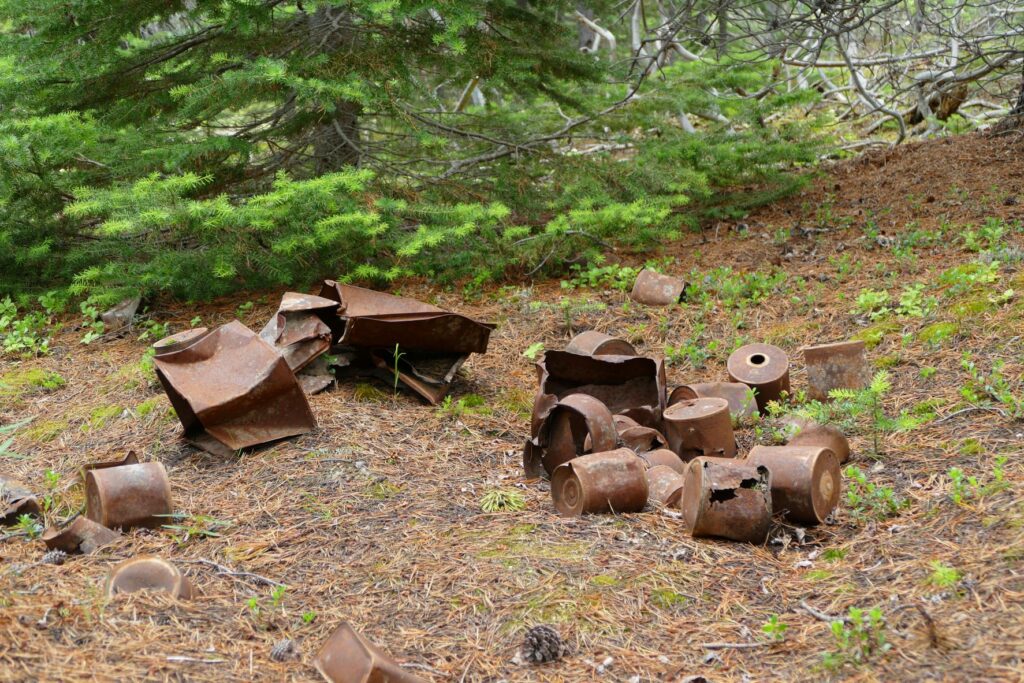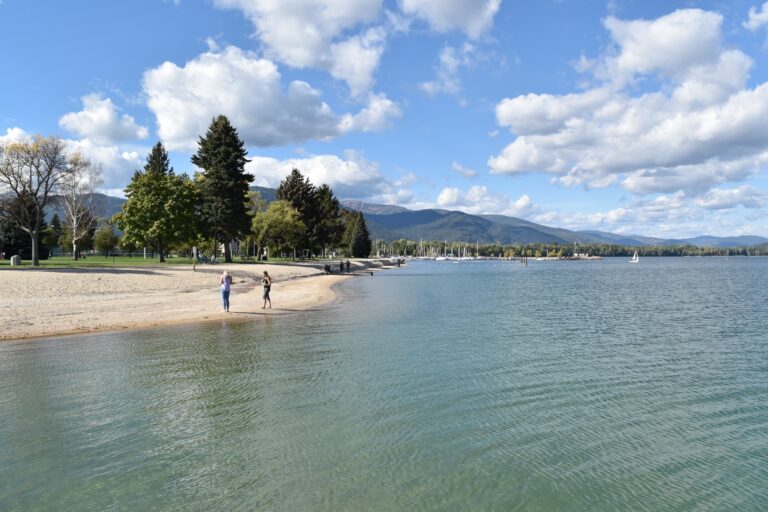“Trash!” says Starr Farrell, “Trash is the number one issue we experience in our forest.” Starr is the Public Affairs Specialist for the Colville National Forest. From 2019-2020, she says, the forest saw a 200% increase in people using forest facilities.
And all too often, those people would camp at free sites and leave their garbage behind. With thousands of first-time users flocking to the outdoors in our region, many don’t know what to expect and are ill prepared for things as basic as packing out their own garbage.
“When everything is brand new,” Farrell says, “it can be daunting.”
And let’s face it. For all of us, it was new at some point. For example, when I was 23, I first heard the term “cryptobiotic crust.” Part of a group of photography students, mostly from the east coast, we found ourselves caught between protecting nature and capturing “the perfect shot.”
We learned that, to step off the trail in a seemingly lifeless and arid desert, meant destroying thousands of years of delicate crust that protects the land from erosion and contains an amazing and diverse ecosystem, beautiful in its resilient intricacies.
At 25, I learned to “swill,” using tea or water to clean food particles out of my camping dish, and then drinking it rather than dumping out my food waste in the water or on the ground where it would have unintended consequences.
Ten days of canoeing in a protected wilderness area as a master’s student opened my eyes to a new kind of low-impact recreation, governed by Leave No Trace.
Now, at 40, witnessing my favorite places of solace, silence, and seclusion being overrun by people learning what I have, that the wilderness is amazing, these skills are critical. But not just for me.
With millions of people flocking outdoors, one thing is certain. Our pristine natural areas and wildlands can’t stay that way if we don’t all make some changes, and make them fast.

Backcountry Etiquette Tips
Here are some practical tips for your next backcountry adventure. Please share a copy of this article with anyone you know who might be new to the outdoors or may need a backcountry etiquette refresher.
- Pick Up All Trash: Always carry a trash bag and some latex gloves. The tiny corner you rip off your Clif Bar wrapper might seem inconsequential, but microtrash adds up. Make sure you take everything out that you brought in. Even better, take out other people’s garbage too.
- Tread Lightly: Stay on the trail and camp on durable surfaces like rock, sand, or grass. This might mean you can’t take the best Instagram shot, or that your TikTok video doesn’t have the background you want, but you’re a guest in nature. Act like one—one who wants to be invited back.
- Use Social Media Responsibly: Stop geotagging stuff on social media. You know Mystic Falls in Spokane’s Palisades Park? It’s tiny. But it’s a near-urban waterfall that’s been geotagged to death. Where once there was one trail to access the falls, now canyon walls are crumbling from day users who have a geotag leading them straight to it. It’s ok for some things to remain secret, or at least a little obscure.
- Treat Water With Respect: Do you drink your dishwater or shower water? Me neither. So don’t wash your dishes, or yourself, in the river or lake. Maybe your soap is biodegradable and not a problem and you think the fish will love your food leavings, but neither of those things are true. Don’t introduce chemicals and compounds to the waterways that don’t belong there. Instead, swill your dishwater or bury it away from your camp and bodies of water.
- There Is No Poop Fairy: Bury your poo (or that of your pet) or pack it out. “Wag bags” that allow you to cleanly and sanitarily capture and contain your waste for packing out are easy to find online or at outdoor gear shops. No one enjoys carrying their poo around, but removing that bacteria from the backcountry protects wildlife, waterways, plants, and other hikers who share the space. Carrying a designated dry bag to put the waste bags will eliminate the smell if done correctly. If for some reason you can’t pack out your waste, burry it at least 6-7 inches deep in a cathole at least 200 feet from water, trails, or camp. No one wants to happen upon waste that’s been left behind (pun intended).
- Limit Overcrowding: Check trailhead cams, weather conditions, and ranger stations. If the trailhead is full, find another place to go. If the weather looks nasty, pick a different spot. Rangers can tell you about local wildlife, make trail recommendations, tell you what to avoid, and help you choose an adventure that fits your fitness and skill level.
- Stay on Public Land: Augment your favorite crowd-sourced trails app with to make sure you’re on public land. Many apps like AllTrails, TrailForks, and Mountain Project do a great job of helping people explore and share their favorite places. But often, information that’s posted is not thoroughly vetted. OnX keeps an up-to-date database of land ownership and will help you determine if you’re allowed to be where you’re going, or if you might be trespassing.
“If users can help us be good stewards,” Farrell says, “that would be wonderful! If you see something you can help teach someone in a positive way, do it. We all started from nowhere and had to learn what we know.”
Protecting our backcountry spaces and waterways is a vital responsibility for all of us who recreate outdoors. Sometimes, that means making uncomfortable sacrifices, packing a little more weight, or finding adventures beyond our “normal.”
The outdoors is for everyone and being good and respectful stewards ensures that these beautiful places will stay that way for generations.
Originally published as “Backcountry Etiquette for the Masses” in the July-August 2021 issue.

Carol Corbin is an enthusiastic outdoorswoman and professional conservationist. She wrote about summer trip ideas in the May/June issue of Out There and may regret including too many of her favorite places.
For more stories about Leave No Trace, visit the OTO archives.













